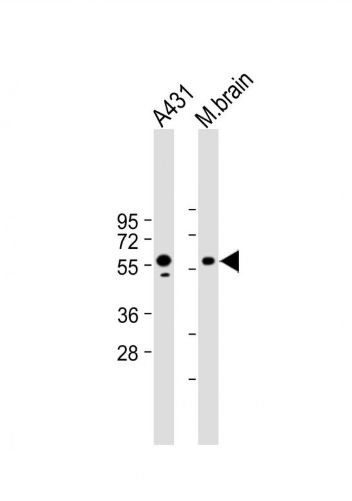All lanes : Anti-Pink1(115-213) at 1:800 dilution Lane 1:
A431 whole cell lysate Lane 2: Mouse brain lysate
Lysates/proteins at 20 μg per lane. Secondary Goat
Anti-mouse IgG, (H+L), Peroxidase conjugated at 1/10000
dilution. Predicted band size : 63 kDa Blocking/Dilution
buffer: 5% NFDM/TBST.
